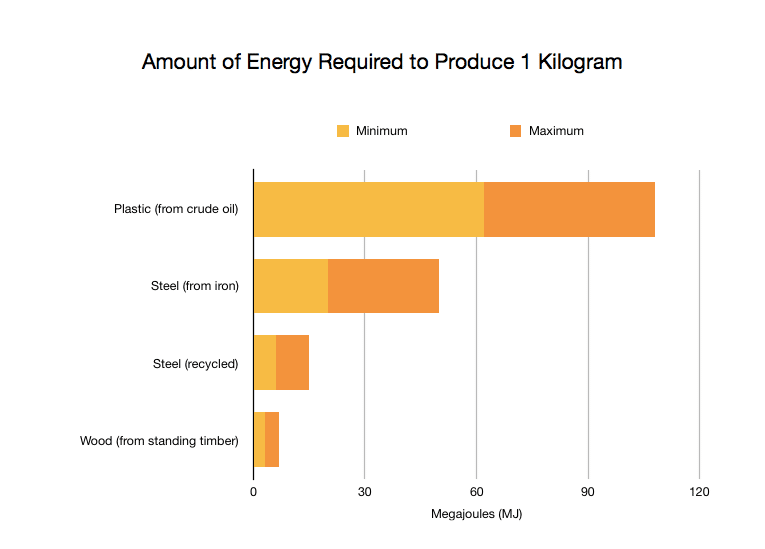How Much Energy Does it Take to Produce Plastic, Steel, and Wood?
Most consumers want to make environmentally responsible choices, but with all the conflicting information available, sometimes it can be hard to determine the best option. For instance, we all know wood is a renewable resource, but is it detrimental to the environment to cut down a tree? To clear things up, let’s compare apples to apples and look at the amount of energy from fossil fuels required to produce three common materials: wood, steel, and plastic.

How does wood compare to plastic and steel? One kilogram of wood sourced from standing timber requires just 3-7 MJ to produce, or about 1/17 as much energy as plastic and 1/7 as much energy as steel from iron. The only material that even comes close to that level of energy efficiency is recycled steel, and when you consider how much lighter wood is than steel, it is obvious that a kilogram of wood will go much further as a building material, widening the energy efficiency gap between the two materials even more. In addition, the carbon stored in wood products almost entirely offsets the greenhouse gas emissions related to wood production. [Food and Agriculture Organization of the United Nations] According to the U.N. Food and Agriculture Organization (FAO), production of wood-based materials and products results in lower greenhouse gas emissions than production of other materials such as concrete, metal, bricks and plastic.” [Food and Agriculture Organization of the United Nations] Wood is an excellent green alternative to fossil fuel intense materials.

